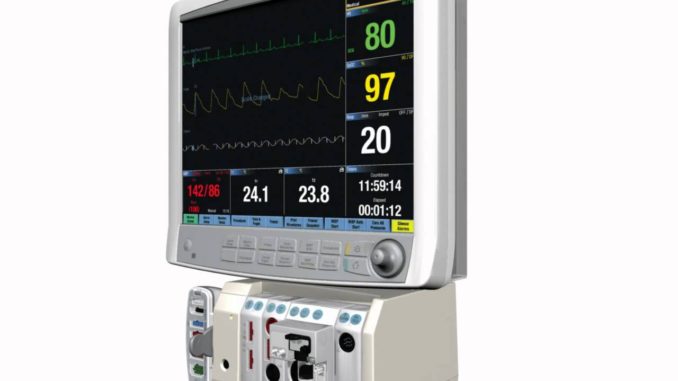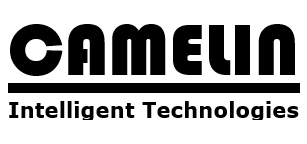
Adaptability for every acuity.
The clinically advanced and highly configurable CARESCAPE* Monitor B850 helps you stay a step ahead with clinical tools that meet even the highest acuity patient needs. Designed with clinicians, for clinicians, it’s an easy-to-use system that fits how you work and handle patient data, offering flexibility, scalability and exceptional customization.
Get the monitoring tools you need today, on a platform that’s designed for the future.
The CARESCAPE* Monitor B850 provides a dependable level of data continuity and integration across care areas.
- Meet even the highest acuity patient needs and help ensure reliable results at every stage of patient care.
- Customize the comprehensive set of parameters to integrate seamlessly and enable fast and accurate decision support.
- Innovative gas and respiratory monitoring
- Proven Marquette* ECG algorithm
- Unique Adequacy of Anesthesia Concept for tailored anesthesia
- Improve patient flow door-to-door while receiving the seamless data flow with CARESCAPE Gateway into HIS/EMR.
- View data and get clinical intelligence from multiple sources: lab results, medications, MUSE* cardiology information system data, telemetry and more.
- Connect to displays, printers, recording devices and other monitors for bed-to-bed viewing, or to data management software devices via a network.
- Increase clinical workflow efficiency by customizing alarms to match the procedure or patient needs.
- Easily train all staff experience levels on the intuitive user interface.
- Leverage your existing network and protect your long-term investment with scalability, flexibility and upgradability.
- Choose options for software, hardware, parameters and other capabilities to keep pace with technology without purchasing all new equipment.
- Get in-person, remote or off-site service to keep your system running efficiently while lowering maintenance costs.
For the NICU:
- Specific NICU software package includes Profiles and Pages, allowing you to reconfigure quickly for patient acuity, type of use or clinical status.
- Event annotation allows you to differentiate events.
- Alarm limits are specified for NICU use, and can be silenced easily and routed to a network alarm, for a more peaceful environment.
- Alarm management tools like Automatic View on Alarm and network alarm management help to improve workflow when caring for babies.
- DINAMAP* NIBP algorithm specially tuned for premature physical characteristics.
- High-resolution CRG trends with 2-second viewing allow beat-to-beat evaluation of bradycardia and apnea events.
For Cardiac/Intensive Care:
- EK-Pro arrhythmia monitoring uses four simultaneous leads for analysis, including atrial fibrillation detection and trending, to help maximize correct event detection and minimize false alarms.
- Continuous ST-segment monitoring of up to 12 leads and ST trend views enable you to detect clinically significant changes rapidly and intervene immediately.
- Continuous monitoring of QT/QTc prolongation helps you prevent life-threatening torsades de pointes events.
- Optional ACS mode provides higher sensivity 12SL* analysis for the detection of acute coronary syndrome in patients suspected of acute myocardial infarction or ischemia.
- Diagnostic quality of 12SL* analysis and automatic, initial interpretation, along with two-way integration to the MUSE* cardiology information system, enable fast, validated access to a patient’s 12SL history and serial comparison of cardiac status.
- Up to 72-hour parameter trends allow you to analyze changes in the patient’s status, as well as evaluate the treatment’s effectiveness.
- Innovative gas exchange and metabolics technologies, including Patient Spirometry, aid the clinician in optimizing the patient’s nutrition, work of breathing and ventilator settings in order to help the healing and weaning process.
- Through PiCCO technology, a less invasive hemodynamic monitoring capability that may help in managing fluid therapy, assessing volume status, assessing cardiac contractility and detecting pulmonary edema in pediatric and adult patients.
For the OR and PACU:
- OR-dedicated software options to meet your specific monitoring needs.
- Hardware scalability with parameter modules and a variety of frame, display, and mounting options.
- Anesthesia Carestation* solution combines patient monitoring, anesthesia delivery, predictive drug modeling, perioperative imaging and EMR devices in a single, integrated system.
- Access to ECG database from pre-op to recovery, to assist in the early detection and treatment of potentially lethal cardiac problems.
- Unity Network* ID, when combined with the CARESCAPE* Monitor B850, allows you to connect to other vendors and selected devices, as well as send data to electronic medical records.
- Full OR monitoring, including Spirometry and gas information together with hemodynamic parameters and advanced Adequacy of Anesthesia information (Entropy and NMT measurements).
Multi-parameter modules

- CARESCAPE Patient Data Module: Facilitates patient mobility with uninterrupted flow of clinical intelligence before, during and after intra-hospital transport by collecting all patient data from the CARESCAPE modular monitor and refreshing the patient’s record when reconnected to the network in the new location. Capable of 24-hour data storage with 36 arrhythmia events, 10 ST segments, 20 cardiac calculations and 10 pulomanary calculations. Exceptional parameter set includes 3-, 5-, and 6-leadwire ECG up to 8 measured ECG waveforms, EK-Pro four-lead arrhythmia analysis, optional 12RL* derived 12-lead ECG and 12SL* diagnostic 12-lead ECG, DINAMAP* SuperSTAT non-invasive blood pressure, and Masimo® SET® or Nellcor® OxiMax® SpO2.

- Patient Side Module: Enables simultaneous measurement of 3-, 7-, 8- or 12-lead ECG in CARESCAPE* modular monitors, both with ST segment analysis, respiration, pulse oximetry, two temperatures, non-invasive blood pressure and optional two invasive blood pressures (in E-PSMP).
Neurology
- E-Entropy Module: Contains GE’s unique Entropy* algorithm that monitors the state of the brain.
- E-NMT Module: Integrates the measurement of the level of neuromuscular block and provides a quantitative, automatic measurement of muscle response to an electrical stimulus.
- E-EEG Module: Continuous integrated neuromonitoring with four channels of EEG and with auditory evoked potentials (AEP). The EEG headbox, N-EEG, must be used with the module.
- E-BIS Module: Monitors the state of the brain in the OR, ICU and procedural sedation locations. In addition to the BIS, the monitors display one channel of raw EEG, suppression ratio, signal quality index (SQI) and EMG.
Hemodynamic modules
- E-COP Module: Integrates the thermodilution cardiac output (C.O.), right ventricular ejection fraction (REF) and invasive blood pressure (P) measurements.
- E-COPsv Module: In addition to providing those measurements of the E-COP Module, provides mixed venous oxygen saturation (SvO2). ScvO2 measurement can also be obtained with a separate licence.
- E-PiCCO Module: Provides a less invasive continuous cardiac output (CCO) measurement based on pulse contour calculation, transpulmonary thermodilution cardiac output (C.O.) and blood pressure (P).
- E-MASIMO Module: Oxygen saturation measurement utilizing Masimo SET® pulse oximetry.
- E-NSATX Module: Oxygen saturation measurement utilizing Nellcor™ pulse oximetry measurement algorithm, based on OxiMax™ Nell™ line technology.
Respiratory
CARESCAPE Respiratory Modules (E-sCO(V) and E-CAiO(V)(X)): Airway modules designed to monitor respiratory and ventilator parameters in anesthesia and critical care applications. Depending on the module type, host device software version and the clinical application, the modules provide measurements of airway gases, anesthetic agents with identification and Patient Spirometry. Acronyms:
- s = Single width
- C = CO2 and N2O
- Ai = Anesthetic agents and agent identification
- O = Patient O2
- V = Patient Spirometry
- X = Gas exchange
